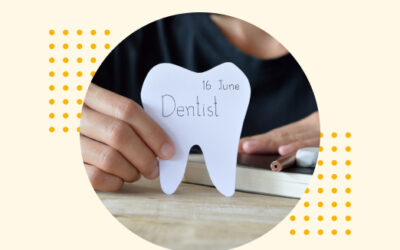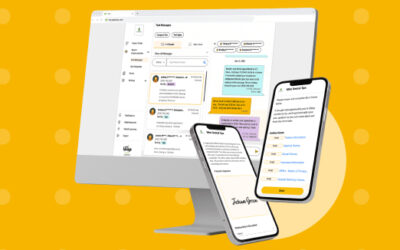
The role of technology in dentistry has been transformative. Adopting a digital workflow mitigates everyday challenges and opens the door to enhanced patient care and more efficient operations. This guide aims to provide a comprehensive overview and actionable advice for dental practices looking to transition into the digital age effectively.
Grasping the Importance of a Digital Workflow in Dentistry
The dental industry often has inefficiencies and operational hurdles rooted in outdated, paper-based systems. These archaic methods are not only cumbersome but also prone to errors that can severely affect both patient care and treatment outcomes. Missing or incorrect patient records can lead to misdiagnoses, delays in treatment, and, ultimately, diminished patient satisfaction.
Transitioning to a digital workflow eliminates these hindrances. Dental professionals can divert their focus toward direct patient care by automating routine processes, such as patient registration and treatment planning. These digital systems also minimize the risk of human error, thereby improving treatment outcomes and boosting patient satisfaction.
An example of effective digital workflow integration is the use of patient communication software. These platforms enhance dental-patient communication, ensuring that both the dental team and the patient are aligned on treatment plans and upcoming appointments.
Components of a Digital Dental Workflow
A digital dental workflow comprises various interconnected components that work in tandem to streamline operations. For starters, digital patient registration replaces the need for paper forms, expediting the initial patient intake process. Digital routing slips can assist in quick information sharing among your dental team.
Treatment planning has also taken a digital turn. Advanced dental software assists in creating customized, accurate treatment plans, taking the guesswork out of the equation. Automated reminders for both dental professionals and patients keep everyone in the loop and reduce the chances of appointment mishaps.
But it’s not just about internal processes. Measuring patient satisfaction, such as post-visit surveys, can also be automated, offering valuable feedback for the practice. Effective patient communication plays a vital role here, allowing you to understand better and address specific patient needs.
Transitioning to a Digital Workflow
Transitioning to a digital workflow may seem daunting, but doing so can be quite seamless with the right strategy. First, audit your existing systems and pinpoint areas that can be digitized. Once identified, prioritize these elements based on their impact on patient care and practice efficiency.
Choosing the right tools for transition is crucial. Digital solutions like Yapi can be integrated into your existing workflow with minimal disruptions. Yapi seamlessly integrates with popular Practice Management Software (PMS) systems such as Open Dental, Dentrix, and Eaglesoft, making the transition easier.
Once the tools are selected, train your dental team extensively to ensure everyone is comfortable with the new systems. A staggered approach to implementation can ease your team into the new workflow without overwhelming them.
Crafting Your Workflows
As you transition to a digital dental workflow, several key aspects of your daily operations stand to benefit. To appreciate the full scope of this transformation, let’s explore a few specific workflows that can be effectively overhauled using digital tools.
Replacing Paper Routing Slips with Digital Versions
Traditionally, a paper routing slip served as the linchpin for communication between the dental team and front desk staff. After treatment, a dentist would hand this slip to the patient, who would then carry it to the front desk for appointment summaries, billing, and future scheduling.
With Yapi’s digital routing slip feature, this process becomes far more streamlined and efficient. Information is instantly shared across the platform, ensuring that everyone from the dental hygienist to the front desk is in the loop. This digital alternative eliminates the risk of lost or incomplete slips, thus expediting the appointment and billing process.
Tips for Digital Routing Slips
– Train Staff Early: Implement training sessions so that the team is well-acquainted with the new digital process before full-scale adoption.
– Audit Regularly: Periodically review the data entered into digital routing slips to ensure accuracy and consistency.
– Integrate with PMS: Ensure that your digital routing slips are compatible with your existing Practice Management Software for a smoother transition.
Transitioning from Paper to Digital New Patient Registration Forms
New patient registration can be a time-consuming and paperwork-intensive process. Paper forms not only have the potential to get misplaced but also require manual data entry into the system later on.
Switching to digital registration forms automates the intake process and directly feeds the data into your practice management system. This simplification results in a quicker, more accurate intake process that sets a positive tone for the new patient’s experience and reduces waiting time, which reports have found to be the area least liked by dental patients.
Tips for Digital New Patient Registration
– Pre-fill Information: Whenever possible, pre-fill portions of the form using existing data to speed up the process.
– Mobile Compatibility: Ensure that your digital forms are mobile-friendly, allowing new patients to complete them before even setting foot in the dental office.
– Add a Confirmation Step: Include a summary page for patients to review their information before submission, which adds an extra layer of data accuracy.
Streamlining Appointment Reminders and Confirmations
Sending appointment reminders through postcards or manual phone calls can be time-consuming and prone to errors. Digital reminder systems automate this task, sending timely reminders via email or text messages. This modern approach not only frees up staff time but also allows for easy appointment confirmations, rescheduling, or cancellations, thereby boosting patient satisfaction.
Tips for Digital Appointment Reminders
– Frequency Matters: Determine the right number of reminders for your practice; too many could annoy the patient, while too few could result in no-shows.
– Personalize Messages: Customize the text in digital reminders to include specific details like the dentist’s name or type of treatment, making the communication more personal and engaging.
– Follow-up Mechanism: Integrate a follow-up feature to re-engage with patients who miss appointments, aiming to minimize gaps in the treatment cycle.
Automating Recall Systems for Inactive Patients
In a conventional dental office, tracking inactive patients might involve sifting through piles of patient cards or bulky spreadsheets. Digital recall systems make this process a breeze by automatically flagging patients who haven’t scheduled an appointment in a specific period. Automated messages can be sent to re-engage these patients, helping to maintain a healthy practice.
Tips for Digital Recall Systems
– Segmentation: Group patients based on their last interaction with your practice to tailor the recall message effectively.
– A/B Testing: Experiment with different types of recall messages to see what resonates best with your patient base.
– Measure and Adjust: Keep track of recall success rates to continually refine your automated system for optimal results.
Each of these workflows demonstrates the tangible benefits of transitioning to a digital environment. While the initial steps towards this change may require some adaptation, the long-term advantages are clear: a more efficient, effective, and patient-focused practice.
Optimizing Patient Data Collection and Usage with Digital Methods
Beyond patient interactions, digital technology offers unparalleled advantages in data collection and management. From the initial patient consultation to long-term treatment plans, digital records ensure data accuracy and ease of access. Improved data collection allows for better treatment planning, positively affecting the patient experience.
But data is only as valuable as its level of security. A digital workflow also comes with robust security protocols, ensuring the safe handling and storage of sensitive patient information. This is critical in an age where data breaches are becoming increasingly common.
The Impact of a Digital Workflow on Efficiency in a Dental Practice
Efficiency is a key component of any successful dental practice. A digital workflow contributes to this by streamlining various aspects of dental operations. Dental professionals can expect quicker decision-making processes, less administrative work, and more time for patient care.
Improved efficiency extends to the comfort of the patient as well. With fewer administrative tasks to worry about, the dental team can focus on effective communication and personalized patient care, thereby enhancing overall patient satisfaction.
For instance, digital tools can simplify communication between the dental lab and the dental office. This seamless interaction ensures quicker turn-around times for dental procedures, directly contributing to practice growth.
Next Steps Towards a Digital Dental Workflow
The journey toward a fully digital dental practice involves careful planning, evaluation, and implementation. Start by analyzing various digital solutions available in the market. Look for systems that fit into your practice’s unique needs and are compatible with your existing PMS.
Once you’ve selected your tools, create an implementation timeline. Work closely with your dental team to adapt to the new digital environment. Keep an eye on key performance indicators (KPIs) to measure the success of your transition.
A digital workflow is no longer a luxury but a necessity in modern dentistry. The challenges that come with outdated systems can be easily overcome, paving the way for enhanced patient care and streamlined operations. As you take steps to modernize your practice, you’ll find that the benefits far outweigh the effort required to change. It is now time to take your dental practice to the next level.


